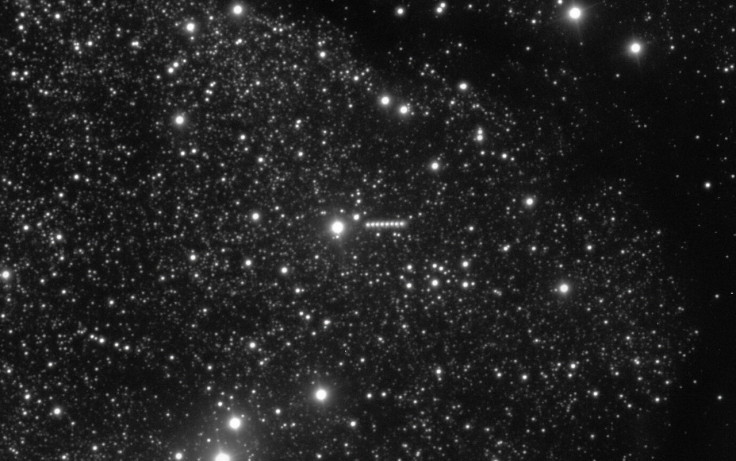Avi Loeb's 'Alien Anomalies' For 3I/ATLAS Are 'Statistical Quirks': Expert
Is 3I/ATLAS an alien probe as Avi Loeb claims? An expert analysis suggests it's just a comet with 'statistical quirks'.

The 3I/ATLAS Mystery: Alien Craft or Just a Cosmic Visitor?
When an object from beyond our Solar System tumbles past our planetary neighbourhood, it is guaranteed to capture our imagination. But the interstellar object known as 3I/ATLAS has done more than that; it has ignited a fierce debate between scientific rigour and sensational speculation.
At the centre of the controversy is Harvard physicist Avi Loeb, who made headlines by claiming there might be a 40% chance the object is an alien spacecraft.
It is an extraordinary claim, one that conjures images of science-fiction epics. However, a new analysis by Professor Jason T. Wright, an astronomer and astrophysicist at Penn State University, dives deep into the evidence.
His findings suggest that while the visitor is certainly fascinating, the truth might be less about E.T. and more about a classic comet.

The Case for a Comet: What 3I/ATLAS and Avi Loeb's 'Duck Test' Reveal
Professor Wright's piece reveals that despite all the hype, 3I/ATLAS displays all the classic behaviours of a perfectly natural, if well-travelled, comet.
As it has neared our Sun, it has developed a glowing tail and a dusty coma, which is the fuzzy 'atmosphere' of gas and dust that forms as ices sublimate under solar heat.
Furthermore, it has been observed ejecting jets of gas, a common cometary feature that can cause slight changes in its trajectory.
This outgassing also explains its changes in brightness, as the object tumbles and presents different icy patches to the Sun. These are all classic, textbook signs of a natural object breaking up as it gets warm.
Ironically, Loeb's own 'duck test,' which he often applies to such mysteries, seems to fit this visitor perfectly: if it looks like a comet and behaves like a comet, it is probably a comet. In this case, the evidence strongly suggests this interstellar traveller is, in fact, a cosmic duck.

Deconstructing the 'Anomalies' of 3I/ATLAS and Avi Loeb
So, what about the so-called 'anomalies' that prompted the alien probe theory? Professor Loeb listed ten of them, including a strange retrograde orbit (orbiting in the opposite direction of the planets), an unusual nickel-rich composition, and a strange 'acceleration' not caused by gravity.
He even suggested a speculative link to the legendary 'Wow!' signal, a brief, powerful radio signal detected in 1977.
The online astronomical community has been buzzing with these claims. But when other experts took a closer look, many of these supposed anomalies were found to have perfectly natural explanations.
The strange acceleration, for instance, is easily explained by the jets of gas pushing the comet slightly off-course, a common phenomenon. The retrograde orbit is not strange for an object ejected from its own star system; it is simply a cosmic tourist that entered our system from a different direction.
And the link to the 'Wow!' signal is seen by most scientists as a statistical quirk, an interesting coincidence rather than a shred of evidence.
🚨 The 3I/ATLAS Mystery: Alien Craft or Just a Cosmic Visitor? 🚨
— Astronomy Vibes (@AstronomyVibes) November 11, 2025
Something strange is passing through our Solar System — the interstellar object 3I/ATLAS. Physicist Avi Loeb made headlines claiming it might have a 40% chance of being an alien spacecraft. Sounds wild, right? But… pic.twitter.com/kYugL1PXov
A Natural Traveller: The Evolving Story of 3I/ATLAS and Avi Loeb
This does not mean the object is boring. Some oddities are certainly real and very intriguing. The unusual nickel content and the low water levels do tell a fascinating story, just not one involving a spaceship from another civilisation.
Instead, they tell the story of a traveller from a completely different star system, one that may have a chemical composition very different from our own. 3I/ATLAS is a priceless scientific artefact, a frozen messenger from a distant stellar nursery. It gives us a rare chance to study the building blocks of another solar system without ever leaving our own.
In the end, Professor Wright reminds us of a crucial scientific lesson: not every mystery needs an alien answer. As his expert analysis makes clear, sometimes nature itself writes the most mysterious and compelling stories. The truth of a simple, frozen visitor from an alien star is, perhaps, the most wonderful story of all.
The debate over 3I/ATLAS highlights a fascinating split in the scientific community: should we chase the extraordinary possibility of alien technology, as Avi Loeb suggests, or follow the evidence pointing to a natural, if still wondrous, interstellar comet?
Professor Jason T. Wright's analysis makes a strong case for the latter, explaining away 'anomalies' as 'statistical quirks' and cometary behaviour.
© Copyright IBTimes 2025. All rights reserved.




















